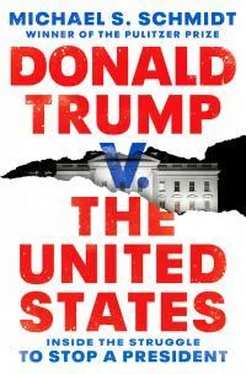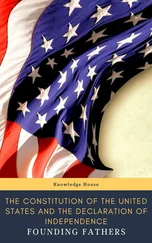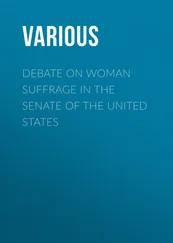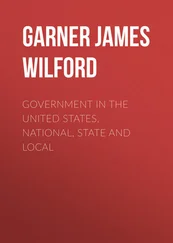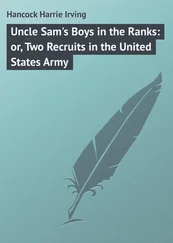There was another pause. Our conversation had quickly turned from personal to professional, from casual to intense. But McGahn wasn’t looking for an exit. At least not yet. Instead, he seemed to want to know what I knew.
“That’s not it. You damaged him, and he doesn’t understand that,” I said. “It amazes me that he never understood why you really went in there and how extraordinary your cooperation has been.”
He again tried to downplay what he had done.
All was quiet for a moment, and then I added, “We’re going to have to write this at some point.”
McGahn did not like that. The idea of a New York Times story chronicling the extent of the White House counsel’s cooperation, going so far as to note that the special counsel felt as if he were “running” McGahn, would be devastating for his relationship with this most mercurial president. McGahn hinted at what we both knew: If the president realized the severity of what his own lawyer had done, he could be fired.
I told him that I understood the concerns about his job, but that that would not factor into our decision about whether or when to publish the story.
Just then, sheets of rain. My time was up. In the downpour, we shook hands.
“I’ll be in touch,” I said, loud enough to cut through the storm.
“This is the last time we ever talk,” he responded with a smile as he turned and walked away.
II
THE INSTITUTIONALIST
JULY 10, 2015
ONE YEAR, SIX MONTHS, AND TEN DAYS BEFORE DONALD TRUMP IS SWORN IN AS PRESIDENT
THE SEVENTH FLOOR OF THE FBI’S HEADQUARTERS IN WASHINGTON, D.C.—On summer Fridays in the mid-2010s, I tried to work from home in my sweats. There was no indication anything would get in the way of that plan on Friday, July 10, 2015, or that the day would be at all eventful, much less consequential. But on that day, as most of the capital was enjoying a long break the week after Independence Day, two things occurred at the FBI’s headquarters that would have a profound bearing on the following year’s presidential election.
The call from my regular contact at the FBI came in early that morning.
“Just get over here,” the voice said in the slightly irritated tone of most FBI agents.
This made no sense.
Just a day earlier, the FBI director, James B. Comey, had held one of his quarterly sit-downs with all the reporters who covered him and the agency to answer our questions about the bureau.
Now he wanted to see us again?
I threw on a sport jacket and hightailed it from my small one-bedroom basement apartment in northwest Washington over to the bureau’s headquarters six blocks east of the White House. After passing through the security screening, I was brought up to the same plain room where all of us on the FBI beat sat with Comey around a table at the same time the previous day.
Reporters don’t like being kept in the dark. As we waited for Comey to arrive, speculation filled the void.
Maybe the FBI had nabbed a major terrorist? No, we would have definitely heard something about that. Had the bureau discovered that one of its top agents was a spy? Was Comey sick?
Just then, Comey walked in, a grave expression on his face, quickly sat down in front of us, and studied a single sheet of paper.
Over his two years as FBI director, everything had seemed to go right for Comey. His predecessor, Robert S. Mueller III, rarely spoke to the press or connected with agents in the FBI’s fifty-six field offices spread out across the country. Instead, Mueller managed the bureau from behind closed doors in Washington, with a reserve that had distinguished his long career in federal law enforcement. As he remade the agency into a counterterrorism fighting force in the aftermath of the September 11, 2001, attacks, Mueller’s rigid style left many of the agents, analysts, and other personnel in the bureau feeling chastened and alienated. Members of Congress, tasked with oversight of the bureau, felt similarly miffed by Mueller. Comey had recognized this problem before he became director and brought to the job a personal charisma and communication skills that set him apart, not only from his predecessors at the agency, but from nearly every politician in Washington.
In his first year as director, Comey had gone on a “listening tour.” He visited all the field offices, giving a press conference at each stop, and spent hours getting lunch and coffee with lawmakers. Could anyone remember Mueller convening a single press conference, much less fifty-six of them? And since when did the director of the FBI owe anyone public utterances, on any subject, for any reason? Mueller’s model had been a posture of complete probity. But although Comey meant to imply no criticism of his predecessor, he was transforming the position of director from that of a sphinx—opaque and silent—into a veritable public figure. In his second year, Comey had begun using the directorship as a bully pulpit of sorts, speaking out about issues that went beyond the day-to-day churn of the bureau’s investigations. He had an ease about him in the role, an air that communicated the utter conviction that principle was on his side. For any flaws that Comey might have possessed, he did not seem to suffer much from self-doubt, at least not publicly. In February 2015, he had given an unusually candid speech at Georgetown University about race and policing in which he quoted the Broadway show Avenue Q, saying, “Everyone’s a bit racist.” Comey was widely praised for the speech, including by police commissioners and officers. That reaction stood in stark contrast to how many responded several years earlier when, as attorney general, Eric Holder said that the United States “has proudly thought of itself as an ethnic melting pot” but had been “a nation of cowards” on race.
But in the conference room on the seventh floor of FBI headquarters, Comey sat in front of a group of puzzled reporters, clearly disturbed. Normally comfortable speaking off the cuff, on that day he instead studied that piece of paper in front of him and then read some of it aloud.
“I believe the job of the FBI director is to be as transparent as possible with the American people, because we work for them,” Comey said. “As you know, I try hard to explain our work to them, and I am also committed to explaining to them when we make a mistake and what I intend to do about it. I’m here today to talk to you about a mistake, in a matter of heartbreaking importance to all of us.”
The mistake, Comey said, related to Dylann Roof, the twenty-one-year-old man who, the previous month, had joined an evening prayer service at the Emanuel AME Church in Charleston, South Carolina, and then proceeded to execute nine Black parishioners with a Glock .45 handgun. Roof had said he committed the massacre in the hopes of starting a race war and that he believed Blacks were violent and had lower IQs than whites.
That morning, Comey said that because of what he described as a terrible breakdown in the FBI’s background check system, involving a cascading series of mistakes and bureaucratic miscommunications, Roof had been allowed to purchase the weapon despite an earlier drug arrest that should have disqualified him from gun ownership.
By 2015, mass shootings had become the norm in America. But the murders at Mother Emanuel, as the church is affectionately known, shocked a country that had grown numb to gun violence. Roof had targeted people at their house of worship, hunting them because of their race. The intensity of the grief was a powerful reminder of America’s deep and seemingly eternal racial wound. The nine victims were still being mourned in the Charleston community and beyond. In the days following the murders, the immediate survivors of the dead—in an act of grace that stunned the country—had forgiven Roof. And grace was the theme of President Obama’s eulogy as he led the country in mourning at the memorial service nine days after the shooting. As he finished speaking, the president broke into song, leading the congregation in “Amazing Grace,” a soaring moment of pain and promise that banished cynicism and enshrined the moment in history.
Читать дальше
